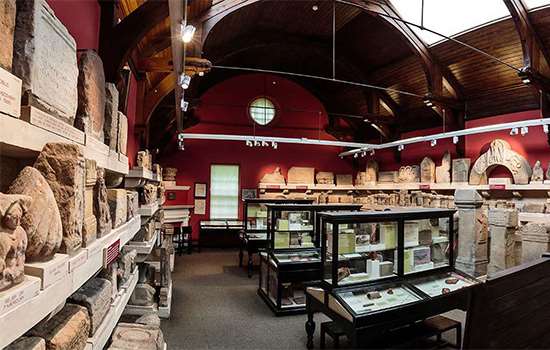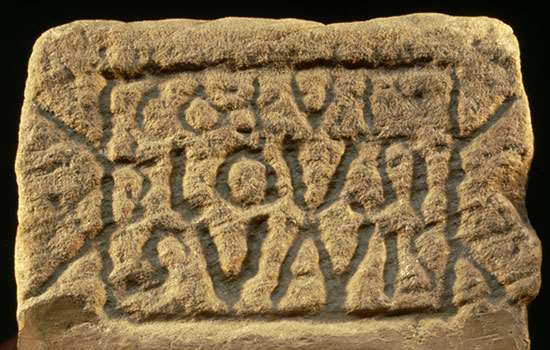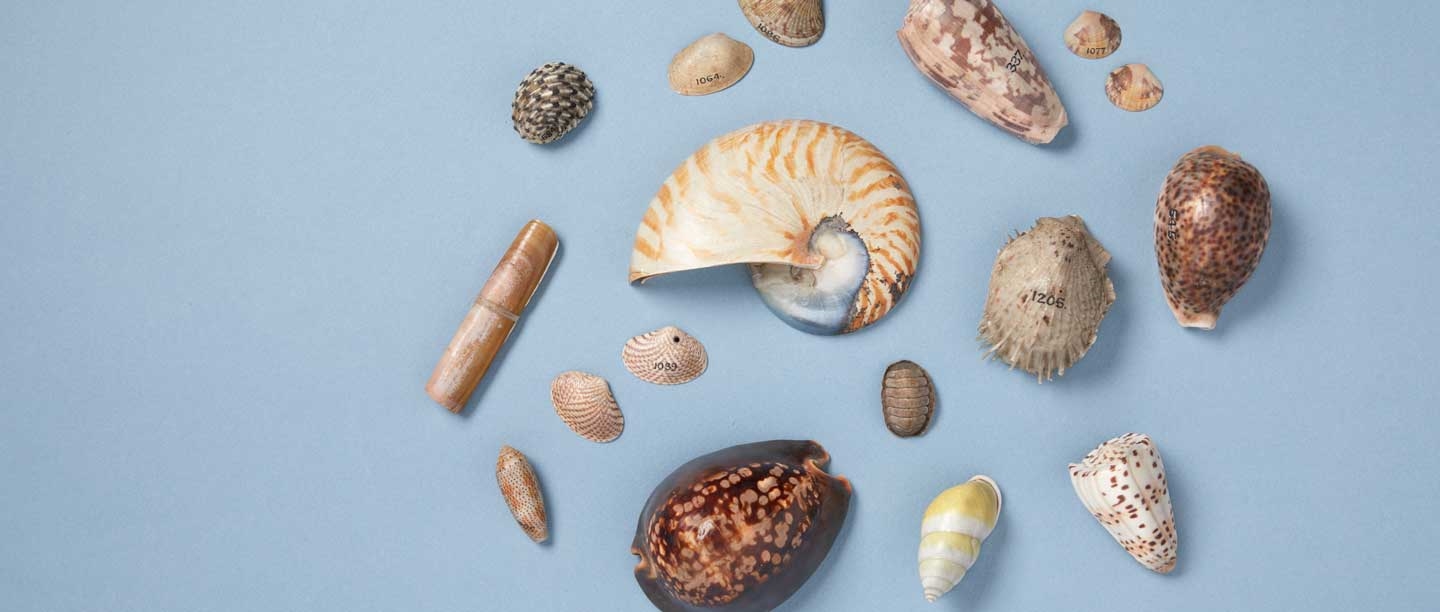Sunburst star turban
Astraea heliotropium
Distribution: New Zealand
Size: 75mm
Named for its shape, this shell is an exciting link back to Captain Cook (1728–79) and his voyages around the world. Brought back to Europe by the officers and crew who sailed the world, this shell is endemic to New Zealand, so can only have come from that place.
Precious wentletrap
Epitonium scalore
Distribution: Indo-Pacific
Size: 65mm
The whorls of this unique shell are not tightly joined together as usual, but are held together by a series of ridges, which leaves gaps between the whorls. The precious wentletrap was thought to be extremely rare so in the 17th and 18th centuries they were sold for hundreds of pounds. Counterfeits were made using rice flour to take advantage of the high price to be gained by selling these shells.
Noble pen shell
Pinna nobilis
Distribution: Mediterranean Sea
Size: 300mm
The creature that lived within this shell secretes long silk-like threads, known as byssus, from a gland in its foot to anchor itself into the sand. Byssus was harvested to be spun and woven into cloth. Both Pope Benedict XV and Queen Victoria had a pair of byssus stockings. It was extremely expensive as approximately 1,000 shells are needed to produce around 250g of yarn, so its use declined in the 19th century, and died out just after the First World War.
Chambered Nautilus
Nautilus pompilius
Distribution: Indo-Pacific
Size: 160mm
The nautiloid, the animal living in this shell, has around 90 tentacles. It lives in the outer chamber of the shell. As it grows, it creates a larger chamber and seals off the vacated one. These shells have been carved and engraved for centuries, and were among the most coveted natural history items for collectors.
Paper Nautilus
Argonauta argo
Distribution: Worldwide in warm waters
Size: 230mm
Not in fact a shell, but a protective egg case, it is built by the female to keep her thousands of eggs safe as she swims. After the eggs hatch, the case is discarded. It is extremely thin and delicate. Despite the name, these creatures are more closely related to the common octopus than to the chambered nautilus.
Shipworm crypt
Kuphus polythalamius
Distribution: Philippines
Not technically a shell, this tube is the casing made by the animal Kuphus, to allow it to live in its preferred habitat, the mud of mangrove swamps. Typically, they can measure up to 1 metre in length, though this exampkle is 34 centimetres long. The narrow end is the top, which is open to allow for feeding and breathing through siphons.
Queen Scallop
Aequipecten opercularis
Distribution: East Atlantic Ocean and Mediterranean
Size: 55mm
One of a few bivalve molluscs that can swim and so can move quickly when threatened. It fills its mantle cavity with water, then claps the valves shut, forcing the water out in a jet. This propels it through the water in short bursts.
Atlantic Thorny Oyster
Spondylus americanus
Distribution: North Carolina to Brazil
Size: 150mm
These shells cement themselves to rocks or piers, and their shape varies according to where they are anchored. It is common for algae, sponges or coral to grow among the spines, creating a microhabitat, and excellent camouflage. In 1804, Bridget asked her son Matthew to collect her a prickly oyster from where he lived in Jamaica. If he was successful, this could be that shell!
Fluted giant clam
Tridacna squamosa
Distribution: Philippines, Indian Ocean, Red Sea
Fluted giant clams are extremely important to the coral reef ecosystems they inhabit. Whilst this specific species of clam is not currently at risk of extinction, other clams are. All species of giant clams now have protection to try to control their collection and sale under the International Union of Conservation. This is because controls are needed to prevent more species becoming at risk.
-

History of Chesters Roman Fort
One of a series of permanent forts built during the construction of Hadrian’s Wall, Chesters housed some 500 cavalrymen.
-

Bridget Atkinson
Read about the life of Bridget Atkinson (1732–1814), a Georgian collector of shells.
-

Chesters Collection Highlights
The Clayton Collection at Chesters is made up of Roman finds from multiple forts, milecastles and turrets along Hadrian’s Wall.
